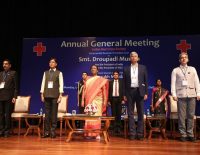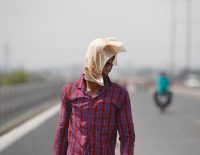WHO calls for strengthening efforts to identify unvaccinated, under-vaccinated children

The World Health Organization on Tuesday called on countries in the South-East Asia Region to further strengthen efforts at all levels to identify and immunize unvaccinated and under-vaccinated children. As per the latest global data, in 2023, nearly 3.4 million children in the region did not get all the vaccines offered under the childhood immunization programme. Around 2.7 million among them did not get any vaccines, leaving them vulnerable to life-threatening diseases, WHO said in a statement.
“The increasing numbers of unvaccinated and under-vaccinated children calls for urgent and accelerated action. We need to identify where and why these children are missed and prioritize reaching them at the earliest. No child should fall sick or die of any vaccine-preventable disease when safe and effective vaccines exist to protect them against these deadly diseases,” said Saima Wazed, Regional Director of WHO South-East Asia.
The region is off track to achieve the 2030 immunization agenda and the regional vaccine action plan to achieve over 90 per cent coverage with three doses of diphtheria, pertussis, and tetanus (DTP3) vaccines in all countries, she said.
The WHO and UNICEF joint immunization data for 2023 shows DTP1 coverage in the region at 92 per cent, below the pre-pandemic 94 per cent in 2019 and DTP3 coverage, an indicator of full immunization, at 90 per cent, less than pre-pandemic 91 per cent in 2019.
Children receiving the first dose of measles vaccine, typically at 9 or 12 months, declined to 91 per cent in 2023 from 94 per cent in 2019, while coverage with the second dose of measles vaccine administered to children between 18 months and five years old remained relatively constant at 85 per cent, she said”The focus must be on tailored approaches, identified in consultation with the affected communities, local solutions to local issues. No matter how challenging or remote the setting is, we will need to find new ways to reach the children most at risk of life-threatening diseases,” Wazed said.







